 Your new post is loading...
 Your new post is loading...
Macy’s has announced they will shut down 14 stores as part of a restructuring effort, citing a shift in how consumers shop. The retail giant notes that this is part of a broader plan to meet consumers where they are: online.
The closed stores will mean a reduction of 1,343 jobs and should be completed within the next few months. The news has the average layperson assuming the worst of the brand, but Macy’s is no JCPenney, no, this is a simple effort that is common for large brands. These closures represent only a fraction of the brand’s 790 stores across America....
When was the last time you paid the full retail price? According to a recent article in The Wall Street Journal (Attention, ‘Discount Junkies’) about 15% of shoppers generally pay full price for items and don’t bother searching for sales. At the other extreme, a fifth of online shoppers are considered true “discount junkies,” people who make purchases only when offered discounts.
Discount shoppers are clearly reluctant to spend on premium brands if value is missing. In fact, in C. Britt Beemer and Robert L. Shook’s book “It Takes a Prophet to Make a Profit: 15 Trends that are Reshaping American Business” published back in January 2001, Trend 6 states:“Consumers Are Reluctant to Pay Full Retail Price”
Their research showed that more than 85 percent of all consumers in America shop for merchandise on sale. For those who pay full retail, 44 percent said they did so because they didn’t have time to shop. In addition, they discovered....
Most retailers are familiar with “shopping bulimics” – the consumers who make purchases and promptly return their merchandise. Retail consultant Kurt Salmon told the Wall Street Journal in an article last year that one third of all Internet transactions result in returns. While this might not be the best-case scenario for retailers, some of whom lose millions a year on returns, it’s important to note that consumer behavior often dictates best practices for retailers.
Just as marketers will seek out many channels to connect with potential buyers, retailers are also embarking on omni-channel retailing to offer transaction options with the maximum number of consumers. Recent studies have shown that despite offering free shipping on returns, which has driven up online sales, retailers can leverage more pull with consumers who buy online and want to return their products in person to the physical store....
Shoppers today are overwhelmed with choice. Wherever they go they are overloaded with information, forced to choose between competing offers at almost every hour of the day.
But if vendors are offering all this extra choice to increase buyer satisfaction, they might well be making a mistake. Neuroscientists believe that increasing the comparisons available may actually reduce happiness, for the simple reason that people tend to regret the decision they made because of the additional options they couldn’t pick....
ey first came to the world’s attention 12 months ago with the launch of Apple’s iBeacons in the US. This launch was closely followed by another defining milestone: the Regent Street project in the UK, a first of its kind now in full swing.
Soon after, as I was talking to two outdoor media owners, they were telling me about their plans to bring the technology to the Australian market – both understandably racing to be the first in market given its huge potential for highly-targeted mobile marketing.
Plenty has been written since on how the technology works and its marketing possibilities. For my part, I am genuinely excited about its many benefits. Yet there are some drawbacks to be mindful of also....
Here is a tale of two retailers. In it we can see a glimpse of what the implications are of either embracing the digital world or just playing at the edges.
In the USA Nordstrom is a brand that is investing heavily in technology and building its online brand assets. Over the last 3 years it has invested more than $2 billion in technology primarily aimed at making it easy for customers to buy online. That is 50-65 per cent of its cash flow. But sales have increased 50%. Its share price is up 200%. It is obvious that they get this social digital web.
The department store Myer on the other hand has invested very little in its digital presence and assets over the last two years in comparison. Its sales are flat and the share price is down 50%.Which one would you invest in? Is business extinction a real possibility for one of them?....
Women spend between $5 and $15 trillion a year on consumer goods in the U.S., so it's no wonder brands and marketers are obsessed with figuring out what it is women want.
As the buzz of "women's empowerment" has gained momentum, so too has anexplosion in advertising that's followed suit -- from Pantene's #ShineStrong ad to Always' #LikeAGirl campaign.
But while advertising is huge when it comes to attracting customers, gaining a loyal following as a women-focused brand requires more than a well-shot ad, particularly today when what it means to be a women-focused brand is fundamentally shifting.
Having more women leaders running such brands is certainly accelerating their success, says Sonya Brown, general partner at Silicon Valley-based venture capital firm Norwest Venture Partners. For many of them, a few fundamental qualities stand out across the board...
Companies like Google, Amazon, eBay, and Uber are operating and expanding services that allow shoppers to order something online and have it that same day, without ever leaving home.
If they manage it, despite the expense and complexities involved in delivering over the "last mile," these companies will grow e-commerce's customer base (as well as its share of retail dollars), and siphon off one of offline retail's last real competitive advantages....
Apple just announced a new mobile payments system called Apple Pay.
Apple Pay will work with an NFC (near field communication) antenna that will be built into every new iPhone as well as the new Apple Watch.
To get started with Apple Pay, you can simply add a credit card from your iTunes account. You'll also be able to add new credit cards to Apple Pay just by using the iSight camera on your phone — no need to type in card numbers. Each card will get a device-only account number, so the actual credit card number is never stored on either your phone or Apple's servers.
The service is starting in the U.S. and will work with American Express, Mastercard, and Visa, as well as several major banks, like Capital One, PNC, and Chase....
It has to woo overlooked small retailers in the same way a disruptive technology needs to cater to developers.
Chinese e-commerce giant Alibaba has gotten lots of attention thanks to its pending multi-billion-dollar U.S. IPO. It seems to have no immediate plans to expand in the U.S.—but that's likely just a matter of time. And when it does, Amazon had better watch out, because Alibaba has a host of ready allies: the legions of mom-and-pop retailers that Amazon has left stranded in its wake.
Let's start with some background from Alibaba's perspective. The company controls 80% of the Chinese e-commerce market, which means it needs new markets in order to grow. Its current model—acting as an e-commerce middleman that connects buyers and sellers—might translate well to some big emerging markets, but Alibaba will need to take a more subtle approach in America for three reasons...
Between the confluence of the Web and e-commerce and the rise in hours at work for U.S. workers, brick-and-mortar visits are becoming worryingly infrequent. Online shopping is rapidly overtaking high-street sales with the U.S. Department of Commerce spotting a 3.4% quarterly pickup in e-commerce sales compared to 0.6% for brick-and-mortar retailers during the fourth quarter of 2013.
However, thanks to modern technology, traditional retailers now have a chance to fight back. Strategy consulting firm Control Group put together a thorough report examining several emerging trends in retail technology. Especially, state-of-the-art technologies that make dynamic pricing for brick-and-mortar retailers could indeed enable them to turn the tide in the battle of clicks versus bricks....
If the U.S. economy is getting better, then why are major retail chains closing thousands of stores? If we truly are in an “economic recovery”, then why do sales figures continue to go down for large retailers all over the country? Without a doubt, the rise of Internet retailing giants such as Amazon.com have had a huge impact. Today, there are millions of Americans that actually prefer to shop online. Personally, when I published my novel I made it solely available on Amazon. But Internet shopping alone does not account for the great retail apocalypse that we are witnessing.
In fact, some retail experts estimate that the Internet has accounted for only about 20 percent of the decline that we are seeing. Most of the rest of it can be accounted for by the slow, steady death of the middle class U.S. consumer. Median household income has declined for five years in a row, but all of our bills just keep going up. That means that the amount of disposable income that average Americans have continues to shrink, and that is really bad news for retailers....
Retail technology is rapidly evolving to create a more convenient, fun and immersive in-store and online experience. Here are ten trends to look out for in 2014.
Though there’s no doubt we’re still a nation that needs to be careful with its cash, the dark clouds of recent austerity are starting to float away to reveal a more optimistic, more promising future.
We’re not out of the woods yet, for sure, and the vast majority of people still feel we’re in a recession, but market confidence is starting to return and the masses are beginning, albeit cautiously, to dip into their wallets again.
This change in consumer attitude is also being complimented by the raft of new technology designed to make the shopping experience more accessible, convenient and fun. Peaks and troughs and trends are prevalent in practically every element of society – and retail is absolutely no different....
|
Department stores and mega-malls were among the main places for Americans to meet, socialize and, of course, shop. That’s all changed.
Department stores and other brick-and-mortar retailers registered another lackluster holiday shopping season, while online sales have remained upbeat since Cyber Monday. As more consumers spend a larger share of their dollars online, does this signal the days of shopping at department stores and shopping malls are numbered?
Cyber Monday sales this year were up 8.7 percent compared with 2013, led by a sharp increase in mobile transactions according to IBM Digital Analytics Benchmark. Sales over mobile devices jumped 29 percent . That’s a sharp contrast with the mostly bad news for brick-and-mortar stores, which saw about 6 million fewer shoppers over the Thanksgiving weekend, with overall spending down about 11 percent , according to the National Retail Federation....
While recovering from the holiday rush, retailers can look back at this season’s trends to discover new ways to fuel customer engagement and drive loyalty in the next year. Using real-time analytics, SAP uncovered a wealth of insights about consumers’ attitudes and desires that retailers can use all year long.
We have found that simply listening to what people are already saying provides powerful insights into their attitudes and behaviors. And consumers had plenty to say this holiday season: Shoppers shared their opinions and chronicled their actions with more than 28 million mentions online, an 8% increase over last year, according to SAP analytics.
Holiday shoppers tweeted more than 28 million mentions about their gift purchases- up 8% YoY via @SAP_Retail
Using social media analytics, we combed through the social chatter this holiday season to discover what consumers said – and what they actually did. We found some interesting trends, revealing consumers’ changing tactics and suggesting retailers must respond with different strategies of their own....
By the time you finally submit a payment for an online purchase, chances are good that the seller knows quite a bit about you. Your browsing history reveals all sorts of clues: your interests, which advertisements you’ve been exposed to, and even basic demographics like your probable age range and gender. Just the operating system you use can send significant signals about the prices you’ll tolerate—researchers recently demonstrated that a variety of sites routinely charge more to shoppers using Macs or Android devices.
By comparison, when you make a purchase in a physical store you may as well be anonymous (unless you use a loyalty or membership card). Amongst the unignorable success of companies like Amazon and Alibaba and the exponential growth of e-commerce in general, it’s easy to forget that 75 percent of retail sales still take place in physical stores. And those stores are eager to know just as much about their in-store shoppers as they do about their online shoppers—if not more....
We worked with Shelly Banjo from the Wall Street Journal on a piece about how retailers should use discounts. The Wall Street Journal added a piece of consumer research to accompany the article that was very interesting.
They asked what email headline would get consumers to open an email from a retailer.
Consumers agreed that they are most likely to respond to an email that is advertising a specific (read: relevant) item on sale, not to generic discounts....
When training groups of digital/SEO specialists in PR principles recently, I’ve been amazed by how little thought is often given to the customer journey. But then I sat back and thought about it.
When we look at what is measurable, and what Google says about the customer journey, it’s unsurprising that many people focus on the search from the time the customer comes online.
With the advent of location based services, and even more once wearables take hold, people’s offline behaviours are starting to feed into this information pool, but for the most part this is not a huge part of consideration, either because of the product or because of currently limited adoption of technologies.
What I rarely see in group of SEO/digital experts is the more profound understanding of consumer/customer behaviour from the point of need....
With the rise of e-commerce, more retailers are scrambling to stay ahead of consumers’ evolving expectations about home deliveries.
To that end, insight into global distance selling sales—sales where customers purchase items via TV, phone, or internet and have that good delivered to their home—is now a retailer’s best friend. According to market research firm e-Marketer, global e-commerce sales are expected to jump by 20% to $1.47 trillion this year alone, and by 16% next year.
Worldwide delivery company DHL checked the pulse of delivery-based consumers in a survey of over 11,000 people aged 16-64 in 20 countries. Here are its findings in 10 charts:The British and Germans are all about getting goods delivered; Canadians not so much....
According to the BloomReach study, which involved 1,000 UK consumers and 122 UK online retailers, a third (34%) of retailers believe brand reputation to be the most important factor for consumers deciding on a retailer.
Just 2% of the online retailers believe a personalized shopping experience was an important factor.
However, the view from consumers was remarkably different. Personalized shopping experiences, such as product recommendations and personalized content, were more likely to persuade 31% of consumers to make a purchase.
Furthermore, a significant 85% of consumers said brand reputation was not an important factor....
Consumers want more from brick-and-mortar stores than they can get online, where shopping is faster, easier and often cheaper, members of a panel on retail. They're looking for human interaction, said Rachel Shechtman, founder of Story, a boutique in Chelsea. "The future of retail is about entertainment and community," she said. "It's really about the surprise and delight factor."
Her shop, Story, experiments with retail as a media channel, and is managed like a magazine, according to Ms. Shechtman. It has sponsorships, like magazines have ads, and it's completely redone every few weeks with new products and designs. Most of the shop, Ms. Shechtman says, is pure experience, with a smaller portion where customers can shop....
One of the bigger implications of our new mobile world is the hurt it is putting on the retail supply chain.
There used to be a day when the only way a consumer could get a product from a specific brand was to find it in a store. That isn’t true anymore. With so many brands now reaching the consumer directly and the expectations of the consumer reaching orbital requirements, what will happen to the legacy supply chains still being used by most retailers today?
RSR released a report on the impact that mobile is having on the supply chain and, in case you didn’t know, it has been disruptive and destructive. More change in retail = more opportunity for differentiation....
A few years ago, two marketing professors conducted a study involving jams. It’s since become a landmark. The researchers set up a tasting booth in a supermarket and offered jams to customers. On one Saturday, they offered 24 flavors. On the next Saturday, they offered 6 flavors.
What happened? The results are nuanced, so pay attention.
When 24 jams were available, 60% of the customers stopped for a taste. When 6 jams were available, 40% of the customers stopped for a taste. So it’s better to offer more options, right?
Not really. Of the 60% who tasted one of 24 jams, 3% made a purchase; of the 40% who tasted one of 6 jams, 30% made a purchase. Here’s the key takeaway: 31 people purchased jams when they had 6 options, and 4 people purchased jams when they had 24 options. That’s nearly an 8X difference.
In other words, when you offer more products for sale, more people will visit your store, but fewer people will make a purchase. And as great as it is to get lots of visitors, your sales are what matters.The researchers suggest that when there are too many options, customers get into a state of “choice overload,” or “analysis paralysis.” Sometimes when choices are too great, people choose nothing at all....
...Millions are spent on content creation and propagation across many channels and media. Multi-channel marketing concepts can be fitted to this alternate use case by helping brand marketers understand the contribution of content investments to an engaged audience of individual consumers. It’s like placing iBeacons on branded content such that marketing spend can be optimized around the messaging that connects best with consumers. Metrics such as open rates and website visitor dwell times become indicators of content quality comparable on a relative basis.It takes a blend of informed creative brilliance and technology enablement to pull this off – key is informed.
To these ends, it’s essential to reign in the insights digital channels capture to fuel a profile of individual consumers that lives, grows, and evolves just like the person it describes. These insights help both agencies and brand marketers inform brand storytelling with knowledge of their consumers beyond superficial characteristics. In this way, you could say consumers help write the story....
A look at a few promising items on the "bleeding edge" of technology that could very well be the "next big thing" in local: wearables, multi-touch attribution, and visual search.
Chapter one of local was centered on business listings’ identity and ensuring that consumers seeking businesses could simply find them. Interestingly, this behavior is very similar to the early days of portal-based Internet search, where consumers used resources to "find" information, pricing, availability, etc. of items that they already knew about. This is fundamentally the definition of directional marketing, connecting buyers with sellers.
As local and mobile search continues to increase and evolve, we are seeing greater adoption of discovery-based searching. These "searcher" and "shopper" type searches help consumers research unknown or partial categories and products in more of the awareness and preference forming portions of the consumer’s discovery path....
|



 Your new post is loading...
Your new post is loading...

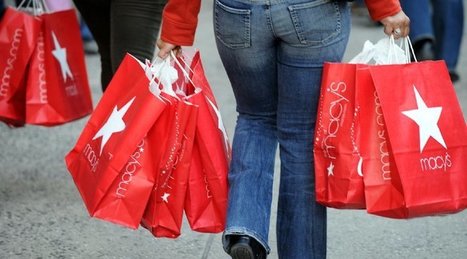









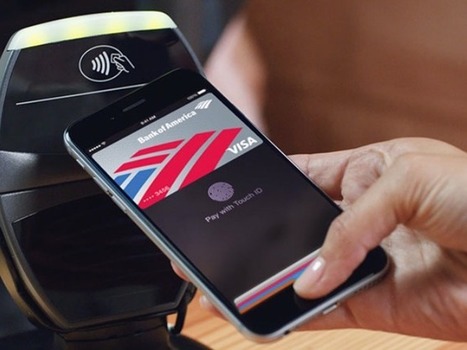


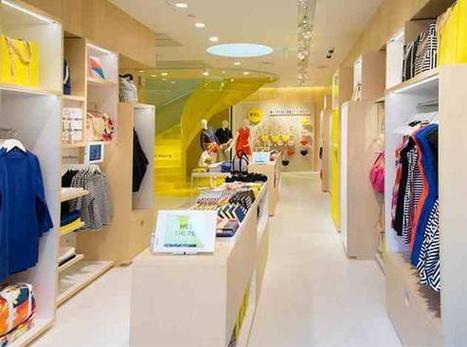






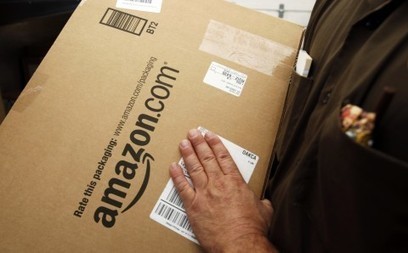


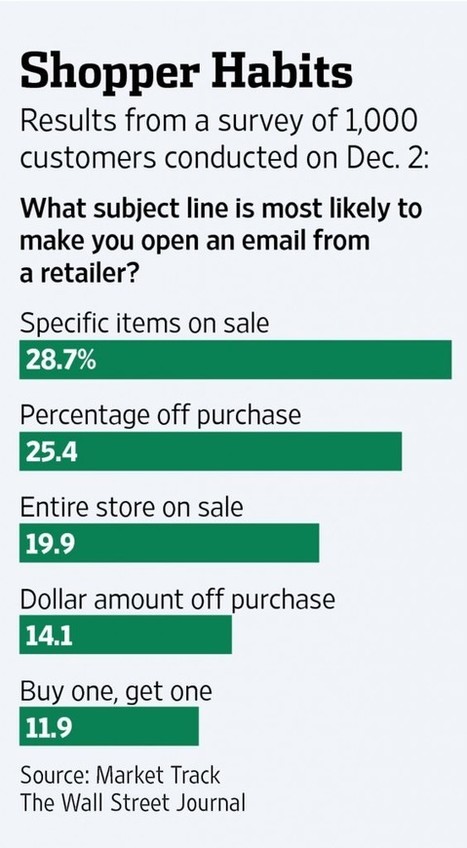



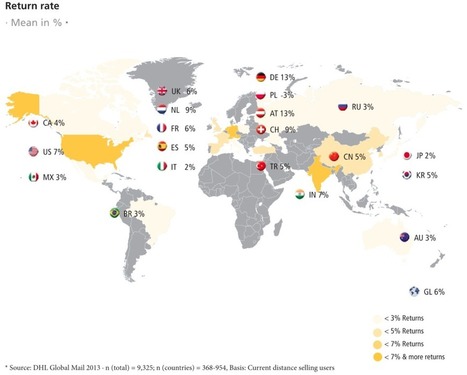











Macy's is restructuring by closing stores and cutting jobs. A new reality for retailers?